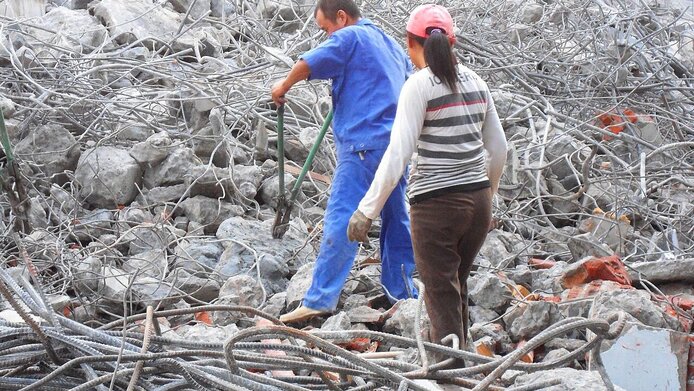Ecologists calculate resource stocks worldwide

An espresso machine, electric kettle, hairdryer – the average 'fleet' of household appliances alone consumes large volumes of material and energy. Building and operating a growing amount of 'material stocks' from electric devices and cars to buildings and infrastructures drives global resource consumption. Today, at the beginning of the 21st century, the global population consumes 68 billion tonnes of material annually. "Rising global resource consumption is pushing our planet to the limits of sustainability. To avoid drastic consequences for the quality of life of populations throughout the world, far-reaching environmental and economic policy measures are needed to achieve the necessary reductions in society's metabolism, from resource extraction to the resulting waste and emissions", explains Fridolin Krausmann from the Institute of Social Ecology Vienna at Alpen-Adria-Universität Klagenfurt.
Modells for sustainability
A crucial factor, namely the material stocks already in use in built structures and durable goods, has been neglected up to now due to a lack of data. A project supported by the Austrian Science Fund FWF now aims at a comprehensive estimate of the development of these global material stocks for the first time. This will also enable the modelling of their long-term impacts on resource flows.
Fossil-based past
To enable the more accurate estimation of material stocks and flows for the development of the model, the project looks to the past: "Two hundred years ago, in agrarian society, solar energy was still the basic energy source. In the mid-18th century it was replaced by fossil fuels like coal and, later on, oil. After the Second World War, total resource consumption doubled and then tripled due to mass production and the rise of throwaway consumption", explains Krausmann. It is important to understand such long-term developments for the empirical analysis: "We examine for different regions how these changes in resource consumption affected material stocks and how these stocks influence future resource needs in turn", explains Krausmann.
Solid calculations not speculation
The project is recording all material stocks and flows from 1900 to 2010 from an overall global perspective and for eleven global regions. A total of 65 material groups are differentiated in a dynamic stock-flow model ("MISO-Model"). A crucial factor here is a top-down perspective, which highlights stock inflows within a pre-defined period of time and combines them with the lifetime of individual materials. This enables the calculation of the expected material stock and the volume of waste that will be generated at a defined point in time. The recycling potential is also quantifiable. The material stocks and flows are analysed in relation to their links with economic development, human wellbeing and other indicators. The resulting correlations enable the calculation of metabolic scenarios up to 2050: "Over the last two decades, the dominance in global material flows shifted from industrialised countries to the emerging economies – particularly Asia. Forecasts of future consumption patterns are still rare", confirms Krausmann. The analysis will show whether the emerging economies will follow the historical consumption patterns of the industrialised countries. Because a calculation of this nature necessitates a large number of assumptions, the model will also quantify the associated uncertainties systematically.
A useful planning tool
The results of the FWF project will contribute to providing a more in-depth understanding of global societal metabolism and demonstrate how a reduction in resource consumption depends on the size, nature and lifetime of infrastructure, buildings and other material stocks. This will enable the development of more realistic scenarios and forecasts for future material requirements, waste volumes, emissions and recycling potential. Such insights are of benefit to political actors as they help them to define plausible reduction targets and to plan effective measures for achieving sustainable resource use.
Personal details
Fridolin Krausmann is Professor of Sustainable Resource Use at the Institute of Social Ecology Vienna, BOKU University Vienna. His research focuses on industrialisation from a biophysical perspective, in particular societal metabolism and energy systems, land use, and agricultural production systems. As a founding member of the ZUG, Centre for Environmental History, he is also actively involved in the establishment of this new research field in Europe. His scientific work is guided by the idea of acquiring important knowledge for the sustainable development of the current socio-economic system by understanding past transformation processes.
More information
FWF Project: MISO Material Inputs, Stocks and Outputs: A model of global material stocks and flows (2015-2018)





